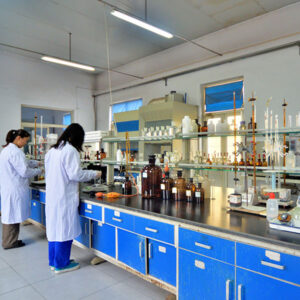Environmental and Health Impacts of Lithium Dodecyl Sulfate (LDS) vs. Sodium Dodecyl Sulfate (SDS)
When comparing Lithium Dodecyl Sulfate (LDS) and Sodium Dodecyl Sulfate (SDS), their environmental and health impacts are critical factors to consider. These impacts influence regulatory compliance, consumer safety, and the sustainability of their use in various applications. Here’s an in-depth exploration of these aspects:
- Toxicity and Biodegradability:
Sodium Dodecyl Sulfate (SDS):
Aquatic Toxicity: SDS is known to be toxic to aquatic life, causing harmful effects to fish and other organisms even at low concentrations. This toxicity necessitates careful management of its disposal and environmental release.
Biodegradability: While SDS is biodegradable, the rate of biodegradation can vary. In some environments, SDS can persist, leading to long-term ecological impacts. Ensuring complete biodegradation is crucial to minimize its environmental footprint.
Lithium Dodecyl Sulfate (LDS):
Potential Toxicity: The toxicity profile of LDS is less well-documented compared to SDS. Preliminary studies suggest that LDS may also pose risks to aquatic life, but further research is needed to fully understand its environmental impact.
Biodegradability: The biodegradability of LDS is not as extensively studied as SDS. Understanding how LDS breaks down in various environments is essential to assess its long-term ecological impact.
- Health Impacts:
SDS:
Skin and Eye Irritation: SDS can cause skin and eye irritation upon contact. This is a notable concern in personal care products, where prolonged exposure can lead to dermatitis and other skin conditions.
Inhalation Risk: Inhalation of SDS dust or aerosols can cause respiratory irritation. Proper handling and protective measures are necessary to mitigate this risk in industrial and laboratory settings.
LDS:
Skin and Eye Irritation: Similar to SDS, LDS can also cause skin and eye irritation. The presence of lithium ions might alter the extent of irritation, but more research is needed to confirm this.
Inhalation Risk: LDS might pose similar inhalation risks as SDS. Ensuring appropriate safety protocols during handling and use is critical to minimize health risks.
- Environmental Persistence:
SDS:
Environmental Persistence: Incomplete biodegradation of SDS can lead to its accumulation in water bodies, contributing to long-term environmental contamination. Monitoring and managing SDS levels in the environment are essential to mitigate this issue.
Regulatory Measures: Regulatory agencies have established guidelines and limits for SDS concentrations in wastewater and environmental discharge to protect ecosystems.
LDS:
Environmental Persistence: The persistence of LDS in the environment is not well-characterized. Research is needed to determine how long LDS persists and its potential for accumulation in ecosystems.
Potential for Regulation: As understanding of LDS improves, regulatory measures might be implemented to control its environmental release and ensure sustainable use.
- Regulatory and Compliance Considerations:
SDS:
Established Regulations: SDS is subject to well-established regulations, including safety data sheet (SDS) requirements, labeling, and disposal guidelines. Compliance with these regulations ensures safe handling and use.
Environmental Standards: There are clear environmental standards for SDS, including permissible limits in effluents and guidelines for biodegradability, which manufacturers and users must adhere to.
LDS:
Emerging Regulations: As a less common surfactant, LDS might not yet be subject to the same level of regulatory scrutiny as SDS. However, as its use grows, regulatory frameworks will likely develop.
Compliance Challenges: Ensuring compliance with emerging regulations for LDS might pose challenges, requiring ongoing research and adaptation to new guidelines.
- Consumer and Occupational Safety:
SDS:
Consumer Safety: SDS is used in many consumer products, necessitating stringent testing and labeling to ensure safety. Products containing SDS must provide clear instructions to minimize exposure risks.
Occupational Safety: Workers handling SDS must follow safety protocols, including the use of personal protective equipment (PPE) and proper ventilation to prevent exposure-related health issues.
LDS:
Consumer Safety: LDS’s safety profile in consumer products needs thorough investigation. Ensuring that products containing LDS meet safety standards and provide adequate usage instructions is crucial.
Occupational Safety: Similar to SDS, handling LDS in occupational settings requires safety measures to protect workers from potential health risks. Training and PPE are essential components of occupational safety protocols.
- Sustainability and Environmental Impact:
SDS:
Sustainability Concerns: The widespread use of SDS raises concerns about its sustainability, particularly its environmental impact and potential for bioaccumulation. Efforts to develop more sustainable surfactants are ongoing.
Eco-Friendly Alternatives: There is a growing interest in finding eco-friendly alternatives to SDS that offer similar performance with reduced environmental impact.
LDS:
Potential for Sustainability: LDS might offer sustainability advantages in specific applications where its unique properties reduce overall environmental impact. Research into its life cycle and environmental footprint is necessary to confirm this potential.
Development of Alternatives: Exploring and developing alternatives to both LDS and SDS that offer improved environmental and health profiles is an area of active research and innovation.
In summary, while SDS is widely used and well-understood, its environmental and health impacts necessitate careful management. LDS, being less common, presents an opportunity for further study to fully understand its impacts and potential benefits. Both surfactants require careful consideration of their environmental and health profiles to ensure safe and sustainable use in various applications.











